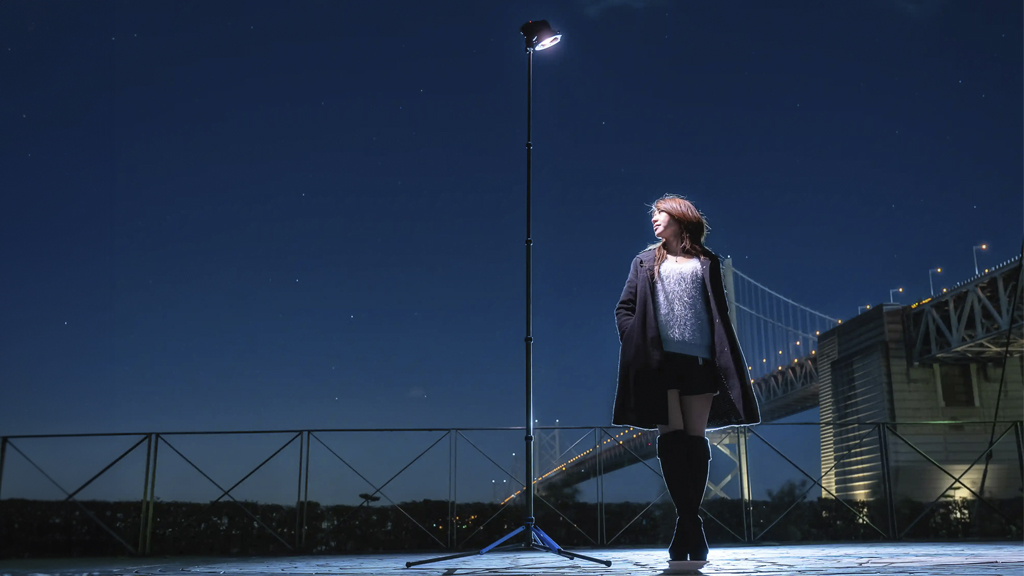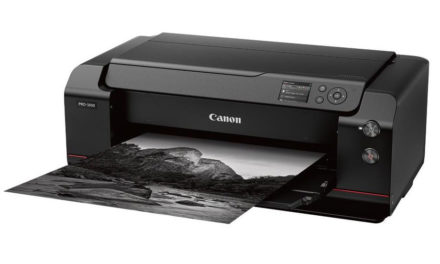Compact, Lightweight Design is Ideal for Travel
Review by Erik Vlietinck
Many people assume C-stands are the safest and sturdiest because of their heavy turtle base; but you can tip them over easily because of their narrow footprint. A similarly sized spreader stand will be less prone to tipping, because its footprint is much wider. That’s why for both photographers and filmmakers who work without a grip crew, the spreader stand is preferable. Travel spreader stands are the lightest and the easiest to throw in the back of a car and quickly set up on location.
Nissin’s LS-65C is such a stand and it’s made of carbon fiber, which is still somewhat of an exotic in the realm of light stands. The LS-65C extends to a full 8.85′ (2.7 m), weighs in at 28.7 oz (815 g), and has a maximum load capacity of 6.6 lbs (3 kg). Its spreading legs are also made of carbon fiber, with each spreader leg having two aluminum stabilizing arms. The legs can be laid flat on the ground, which is a boon if you want to add a sandbag for added stability; for example, in windy conditions. You fasten the stand’s spreaders as well as its five extender poles with twist locks. Spreading the legs to their maximum can be a struggle on some other models (the LumoPro LP608 Air-Cushioned Light Stand comes to mind), but setting up the LS-65C is much faster than with traditional light stands. The baby spigot is made of aluminum, a soft metal, which is why the barrel of the 3/8″ part is protected by a steel band so that mounting screws can’t bite into it. A 1/4″ converter is part of the package.
Closed, the LS-65C fits in a backpack as it’s only 23.6″ (60 cm) high. I tested this Nissin light stand with a continuous light/fresnel lens combination weighing 5.7 lbs (2.6 kg), and found that I could extend the stand to its full length without any problem.

With that kind of weight 8.85′ (2.7 m) above the ground, however, any sort of disturbance makes for an uncomfortable swinging back and forth of the light. I’d rather not risk someone bumping into the stand with such a weight on top; not because I’d be worried about the poles’ breaking, but with the possibility that the stand would jump around if there’s no sandbag on its legs.
I wouldn’t mind mounting it up to a fully extended second pole, though, because there was no swinging at that height at all. In case you were wondering, this has no bearing whatsoever to the stand’s being made of carbon fiber; it’s what I also do with my 11 lb (5 kg) max-load-capable, metal Manfrotto 1052BAC. With the light/fresnel combination, that one swings at full extension as well.
Another benefit of the Nissin LS-65C over metal stands is its weight, especially when you need to carry a few light stands around. The lightest metal stand I tested it against weighed 14 oz (400 g) more.
Last but not least, the Nissin LS-65C has a very nice look, with its bright-blue spreaders, bright-blue accents on the twist locks, and meshed carbon fiber poles. It comes with one accessory: a Velcro contraption that should be a battery holder to affix your battery pack to the stand. This is still an enigma to me, though, as it doesn’t seem to have anything that a battery pack could hold onto, so I’m using it as an extra binder to hold the legs tightly together during transport. A more useful accessory might be a padded carrying bag.






